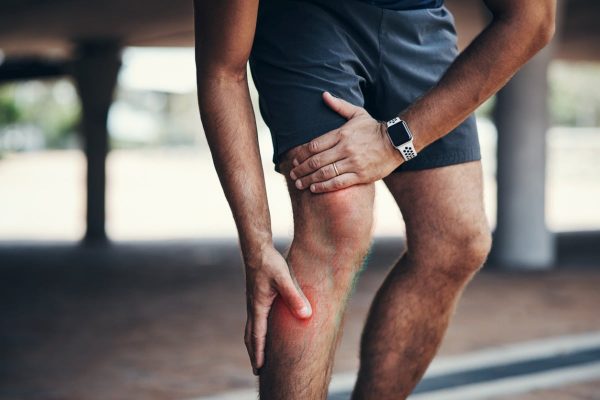
Medial Tibial Stress Syndrome (MTSS), commonly known as shin splints, is a prevalent condition among athletes and individuals engaged in repetitive lower limb activities. Characterized by pain along the shin bone (tibia), MTSS can significantly impact one’s ability to perform daily activities and sports. Understanding the factors that exacerbate medial tibial stress syndrome pain is crucial for effective management and prevention strategies. In this article, we delve into the various factors that can worsen MTSS pain and explore how multidisciplinary approaches, such as those offered at CARESPACE Health+Wellness, can provide comprehensive care for individuals dealing with this condition.
Understanding Medial Tibial Stress Syndrome:
MTSS typically presents as a dull, aching pain along the inner edge of the shin bone. This discomfort arises from repetitive stress on the tibia, leading to inflammation of the surrounding tissues, including the periosteum (the outer layer of bone) and the surrounding muscles. While the exact cause of MTSS is multifactorial, several factors contribute to its development and exacerbation:
1. Overuse and Training Errors: Engaging in repetitive activities such as running, jumping, or dancing without adequate rest or gradual progression in intensity and duration can overload the muscles and bones of the lower leg, increasing the risk of MTSS.
2. Biomechanical Factors: Issues with foot structure, such as overpronation (excessive inward rolling of the foot), high arches, or leg length discrepancies, can alter the distribution of forces along the lower limb, placing undue stress on the tibia and surrounding soft tissues.
3. Poor Footwear Choices: Wearing improper or worn-out footwear lacking sufficient support and cushioning can exacerbate the impact forces transmitted to the lower leg during physical activity, contributing to MTSS development.
4. Muscle Weakness and Imbalances: Weakness or imbalance in the muscles of the lower limb, particularly the calf muscles and those responsible for foot stabilization, can impair shock absorption and increase strain on the tibia, predisposing individuals to MTSS.
How CARESPACE Can Help:
At CARESPACE Health+Wellness, we recognize the importance of a comprehensive, client-focused approach to managing MTSS. Our team of multidisciplinary practitioners, including physiotherapists and chiropractors, collaborates to develop personalized treatment plans tailored to address the underlying causes and alleviate symptoms of MTSS. Here’s how our integrated approach can benefit individuals dealing with this condition:
1. Assessment and Diagnosis: Our skilled practitioners conduct thorough assessments to identify contributing factors, such as biomechanical abnormalities, muscle imbalances, and training errors, that may be exacerbating MTSS pain. By understanding the unique needs of each client, we can formulate targeted treatment strategies for optimal outcomes.
2. Individualized Treatment Plans: Based on the assessment findings, our team develops individualized treatment plans that may include a combination of manual therapy, therapeutic exercises, gait analysis, ergonomic recommendations, and modalities such as ultrasound. These tailored interventions aim to address muscular imbalances, improve biomechanics, and promote tissue healing to alleviate MTSS symptoms and prevent recurrence.
3. Education and Prevention Strategies: Empowering clients with knowledge about proper training techniques, footwear selection, and self-care strategies is integral to preventing MTSS recurrence. Our practitioners provide education on injury prevention, including appropriate warm-up and cool-down routines, gradual training progression, and cross-training activities to reduce the risk of overuse injuries like MTSS.
4. Collaborative Care: Physiotherapists and chiropractors at CARESPACE work synergistically to optimize client outcomes. While physiotherapists focus on restoring mobility, strength, and function through exercises and manual techniques, chiropractors address joint dysfunctions and spinal alignment issues that may contribute to lower limb biomechanical abnormalities. This collaborative approach ensures comprehensive care and enhances the effectiveness of treatment interventions.
Medial Tibial Stress Syndrome can significantly impact an individual’s quality of life and athletic performance. By addressing the factors that exacerbate MTSS pain, such as overuse, biomechanical abnormalities, and muscle imbalances, individuals can effectively manage symptoms and prevent recurrence. Even though shin splints can present as constant pain, you should not have to worry with the help of these practitioners. At CARESPACE Health+Wellness, our multidisciplinary team is dedicated to providing personalized, evidence-based care to help clients overcome MTSS and achieve their health and wellness goals. Through collaborative efforts between physiotherapists, chiropractors, and other healthcare professionals, we aim to empower individuals to live active, pain-free lives. If you’re struggling with MTSS or seeking comprehensive care for sports-related injuries, schedule a consultation with our team today and take the first step towards recovery and optimal performance.




